أيهما أفضل، شاشة P2.5 أم شاشة P2.5 أم شاشة P3 LED؟ تحليل عميق من الأداء إلى التطبيق
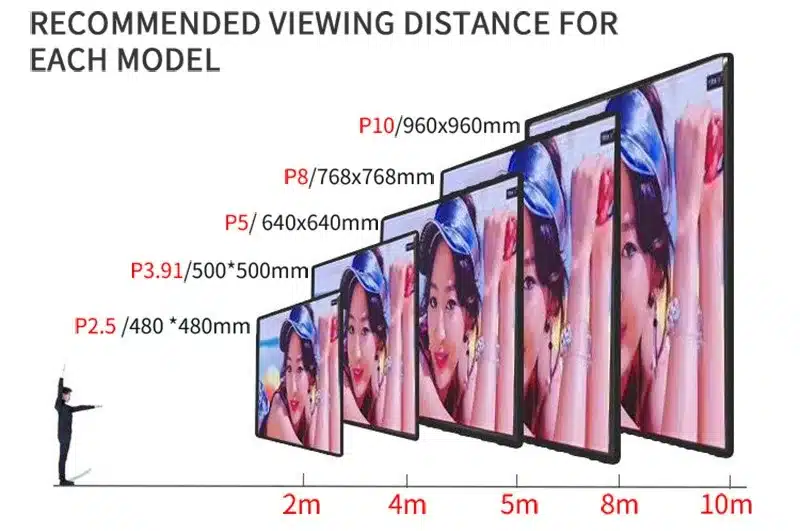
في عصر الرقمنة والمعلوماتية الذي يتطور بسرعة في الوقت الحاضر، تم استخدام شاشات LED، كأداة اتصال مرئية مهمة، على نطاق واسع في مختلف الصناعات. تلعب شاشات LED دورًا حاسمًا في المؤتمرات الداخلية والمعارض والإعلانات الخارجية والعروض المسرحية. عند اختيار شاشة LED، فإن PixelPitch هي معلمة رئيسية تؤثر بشكل مباشر على تأثير العرض وتجربة المشاهدة. في سوق شاشات LED، يعد P2.5 و P3 نموذجين شائعين، فأيهما أفضل؟ ستتعمق هذه المقالة في الاختلافات والمزايا والعيوب بين P2.5 و P3، مما يساعدك على اتخاذ قرارات شراء أكثر عقلانية.
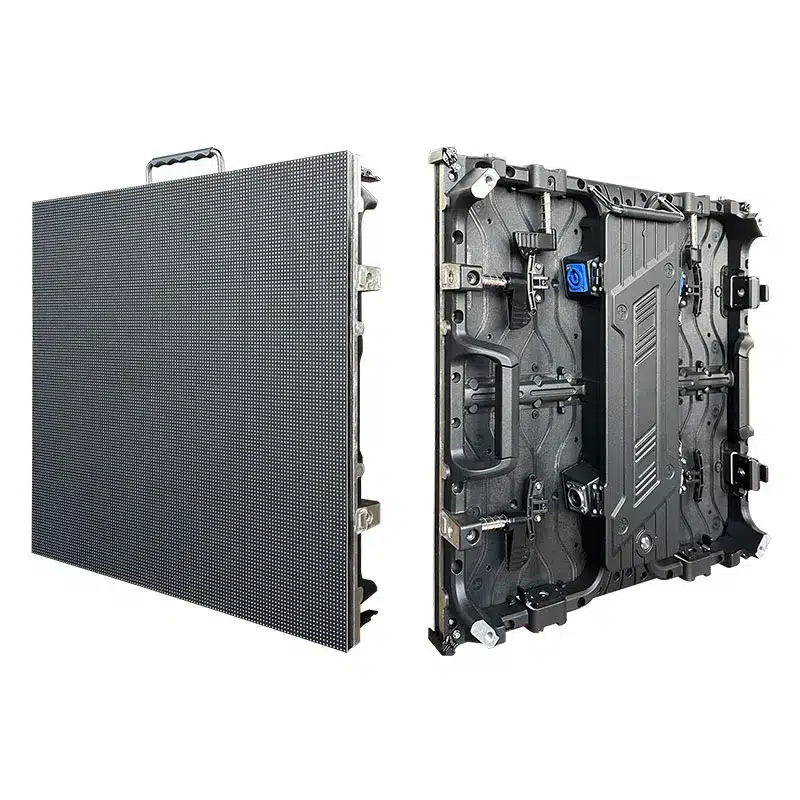
1- نظرة عامة على التباعد النقطي لشاشة LED
يشير التباعد النقطي، بعبارات بسيطة، إلى المسافة بين وحدات البكسل المتجاورة، وعادةً ما تقاس بالمليمترات (مم). ويمثل الرقمان "2.5" و"3" في P2.5 وP3 تباعد النقاط بمقدار 2.5 مم و3 مم على التوالي. كلما كان التباعد النقطي أصغر، زادت كثافة البكسل لكل وحدة مساحة، وكانت الصورة أدق، مما يجعلها مناسبة للعرض عن قرب؛ وعلى العكس من ذلك، كلما كانت المسافة بين النقاط أكبر، انخفض وضوح الصورة، ولكنها مناسبة للعرض عن بعد وتكون التكلفة منخفضة نسبيًا.
2- الفروق الفنية بين P2.5 و P3
من من منظور تقني، يكمن الفرق الأساسي بين P2.5 وP3 في كثافة البكسل. إن كثافة البكسل في P2.5 أعلى من كثافة البكسل في P3، مما يعني أنه بنفس الحجم، يمكن لشاشة P2.5 عرض المزيد من التفاصيل، مما ينتج عنه صور أكثر وضوحًا وسلاسة. على وجه التحديد، تبلغ كثافة البكسل في P2.5 160000 نقطة لكل متر مربع، بينما تبلغ كثافة البكسل في P3 111111 نقطة لكل متر مربع.
يؤثر هذا الاختلاف بشكل مباشر على التجربة البصرية للجمهور. تعد P2.5 مناسبة للتطبيقات الداخلية التي تتطلب دقة عالية، مثل المعارض، وإطلاق المنتجات، ومؤتمرات الشركات، وما إلى ذلك. خاصةً في المواقف التي تكون فيها الشاشة قريبة، يمكن أن يوفر P2.5 أداءً أكثر دقة في جودة الصورة. أما P3 فهو أكثر ملاءمة لبعض المشاهد البعيدة، مثل قاعات المؤتمرات الكبيرة واللوحات الإعلانية الخارجية وما إلى ذلك، لأن المسافة بين الجمهور والشاشة في هذه المشاهد تكون بعيدة نسبيًا، ومتطلبات التفاصيل منخفضة نسبيًا. P3 قادر تمامًا على التعامل معها.
3- الاختلافات في سيناريوهات التطبيق
كما ذكرنا سابقًا، يتمتع كل من P2.5 و P3 بمزايا خاصة بهما في سيناريوهات التطبيقات المختلفة. تعد P2.5، بكثافة البكسل العالية والوضوح والتعبير اللوني، مناسبة للمشاهد التي تتطلب جودة صورة عالية للغاية. على سبيل المثال، في بعض المعارض الراقية، يمكن لشاشات P2.5 LED أن تقدم تأثيرات بصرية مذهلة في بعض المعارض الراقية، حيث تعرض كل تفاصيل المنتج وتجذب المزيد من انتباه الجمهور.
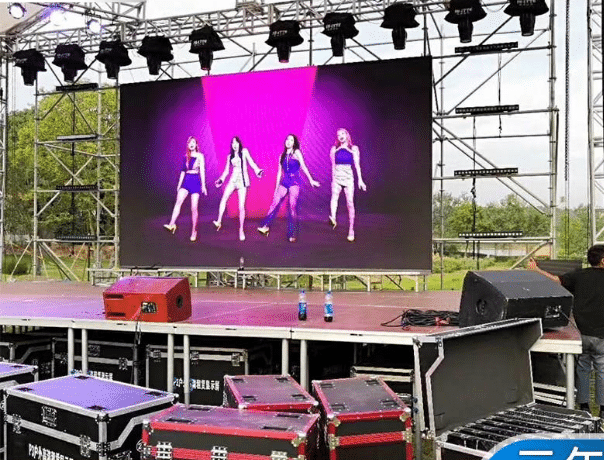
من ناحية أخرى، على الرغم من أن كثافة البكسل لشاشات P3LED أقل قليلاً، إلا أنها تعمل بشكل جيد جدًا في بعض المواقف التي تتطلب عرضًا بمساحة كبيرة ومسافة عرض بعيدة. على سبيل المثال، في اللوحات الإعلانية الخارجية أو العروض واسعة النطاق، يمكن أن توفر شاشات P3 وضوحًا كافيًا واقتصادًا أفضل، مما يجعلها أكثر فعالية من حيث التكلفة للتركيب على نطاق واسع.
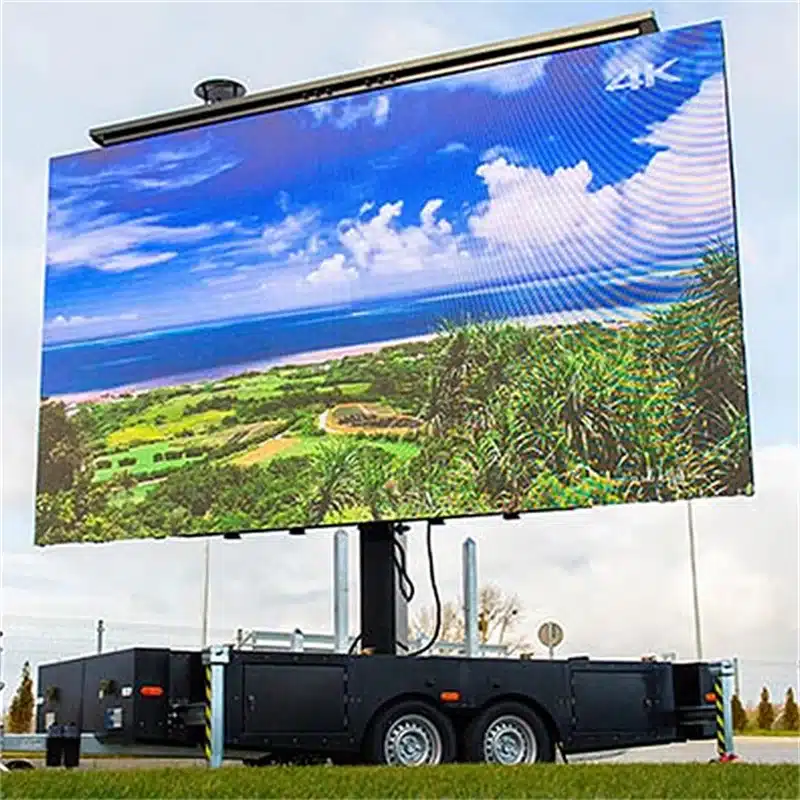
4- النظر في التكلفة والفعالية من حيث التكلفة
التكلفة عامل مهم لا يمكن تجاهله عند اختيار شاشات LED. نظرًا لكثافة البكسل الأعلى وعملية الإنتاج المعقدة نسبيًا لشاشة P2.5، فإن تكلفتها أعلى أيضًا من P3. بالنسبة للمستخدمين الذين يتمتعون بميزانية كبيرة ويسعون للحصول على جودة الصورة المطلقة، فإن P2.5 هو بلا شك خيار أفضل. إذا كان التثبيت على نطاق واسع أو كانت متطلبات جودة الصورة ليست عالية بشكل خاص، فقد يكون P3 أكثر فعالية من حيث التكلفة. لأنه على الشاشات كبيرة الحجم، يمكن أن يلبي وضوح P3 بالفعل احتياجات معظم المشاهدين، كما أن التكلفة منخفضة نسبيًا، مما يمكن أن يقلل بشكل فعال من إجمالي استثمار المشروع.
5- مقارنة بين تأثير العرض وتجربة المستخدم
بالإضافة إلى المعايير التقنية وسيناريوهات التطبيق، غالبًا ما تكون تجربة المستخدم الفعلية هي العامل الرئيسي الذي يحدد الاختيار. يمكن لشاشة P2.5 LED، بفضل دقتها العالية وتأثير العرض الأدق، أن تقدم تجربة بصرية أكثر روعة، خاصة عند عرضها عن قرب. وهذا مهم بشكل خاص في المواقف التي تحتاج إلى عرض صور دقيقة ومحتوى فيديو عالي الجودة. على سبيل المثال، في بعض مراكز التسوق الراقية أو المتاحف أو المتاجر الرئيسية للعلامات التجارية، يمكن لشاشات P2.5 LED إعادة إنتاج نسيج المنتجات وألوانها بشكل واضح، مما يعزز تجربة المشاهدة الكلية.
من ناحية أخرى، على الرغم من أن شاشات P3LED أقل قليلاً من حيث كثافة البكسل، قد يجد المشاهدون صعوبة في إدراك الفرق في جودة الصورة على مسافات مشاهدة أطول. لذلك، في بعض سيناريوهات المشاهدة لمسافات طويلة، مثل الأماكن الرياضية أو مراكز المؤتمرات الكبيرة أو اللوحات الإعلانية الخارجية، يمكن لأداء شاشات P3 أن يلبي الاحتياجات بشكل كامل. نظرًا لانخفاض تكلفة شاشات P3، يمكنها توفير الميزانيات بشكل كبير وتزويد العملاء بفعالية أعلى من حيث التكلفة.
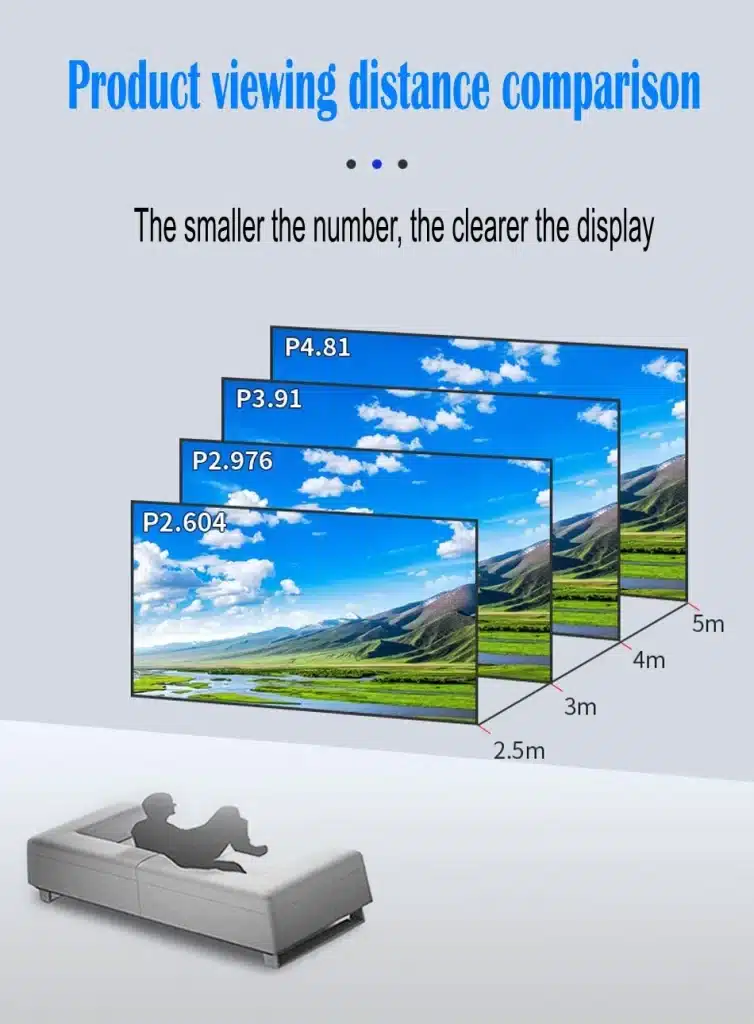
6- مستوى صعوبة التركيب والصيانة
في الاستخدام العملي، يعد تركيب شاشات LED وصيانتها من العوامل المهمة التي يجب مراعاتها أيضًا. نظرًا لكثافة البكسل العالية، تتطلب شاشات P2.5 LED دقة أعلى في وحداتها، وبالتالي تتطلب عملية أكثر دقة أثناء التركيب والتصحيح. ويعني ذلك أنه عند تركيب شاشات P2.5، هناك حاجة إلى فريق أكثر احترافية لضمان استواء الشاشة وسلاسة الربط بين الشاشات، وتجنب عيوب العرض.
شاشات P3LED أسهل نسبيًا في التركيب والصيانة. نظرًا لتباعد البكسلات الأكبر قليلاً، فإن وحدة الشاشة لديها قدرة أكبر على تحمل الأعطال، مما يسهل الحفاظ على الاتساق حتى أثناء الربط على نطاق واسع. تكلفة الصيانة لشاشات P3 منخفضة نسبيًا، خاصة في الحالات التي تتطلب التفكيك أو الحركة المتكررة، مما يجعل P3 أكثر عملية واقتصادية.
7- مقارنة استهلاك الطاقة والعمر الافتراضي
كما أن استهلاك الطاقة والعمر الافتراضي من العوامل التي يجب أخذها في الاعتبار عند اختيار شاشات LED. وبصفة عامة، فإن الفرق في استهلاك الطاقة بين شاشات LED P2.5 و P3 ليس كبيرًا لأنهما يستخدمان تقريبًا نفس خرزات LED ودوائر القيادة. ومع ذلك، نظرًا لكثافة البكسل الأعلى والعدد الأكبر من وحدات البكسل التي يتم تشغيلها بواسطة P2.5، فإن استهلاك الطاقة الإجمالي لشاشة P2.5 أعلى قليلاً من استهلاك الطاقة لشاشة P3 بنفس درجة السطوع.
من حيث عمر الخدمة، يعتمد الفرق بين الاثنين بشكل أساسي على بيئة الاستخدام وظروف الصيانة. نظرًا للكثافة الأعلى لحبيبات الضوء في P2.5، قد يتسبب الاستخدام أو الصيانة غير الصحيحة في فشل البكسل المبكر في بعض المناطق، مما يؤثر على تأثير العرض الكلي. نظرًا للتباعد الأكبر بين النقاط، يحتوي P3 على عدد أقل نسبيًا من حبات الضوء وتأثير أفضل في تبديد الحرارة، لذا قد يكون ثباته أفضل قليلاً في الاستخدام طويل الأمد.
8- هل يجب أن أختار P2.5 أم P3؟ اقتراحات للقرار النهائي
باختصار، لكلٍ من P2.5 و P3 مزايا وعيوب خاصة به، ويجب أن يعتمد الاختيار المحدد على الاحتياجات الفعلية. إذا كان التطبيق الخاص بك يتطلب عرضًا عن قرب ولديه متطلبات عالية للغاية لتأثيرات العرض، فإن P2.5 هو بلا شك الخيار الأفضل؛ ولكن إذا كانت الميزانية محدودة وسيناريو الاستخدام هو بشكل أساسي للعرض عن بُعد، فإن P3 هو الحل الأكثر فعالية من حيث التكلفة.
بالنسبة لبعض المشاريع واسعة النطاق، يوصى بإجراء اختبار في الموقع قبل اتخاذ القرارات، أو استشارة موردي شاشات العرض LED المحترفين لمعرفة المزيد عن حالات التطبيق العملي والتجارب. هذا يضمن أن نموذج الشاشة المحدد يناسب احتياجات مشروعك تمامًا، وبالتالي تحقيق أفضل تأثير عرض مرئي.
سواءً اخترت P2.5 أو P3، فإن ذلك لتحقيق أقصى استفادة من مزايا شاشات LED في سيناريوهات التطبيقات المختلفة. من خلال اكتساب فهم أعمق لخصائص هاتين الشاشتين، يمكنك اتخاذ قرارات أكثر حكمة وتحقيق نتائج أفضل وقيمة أعلى لمشروعك.
